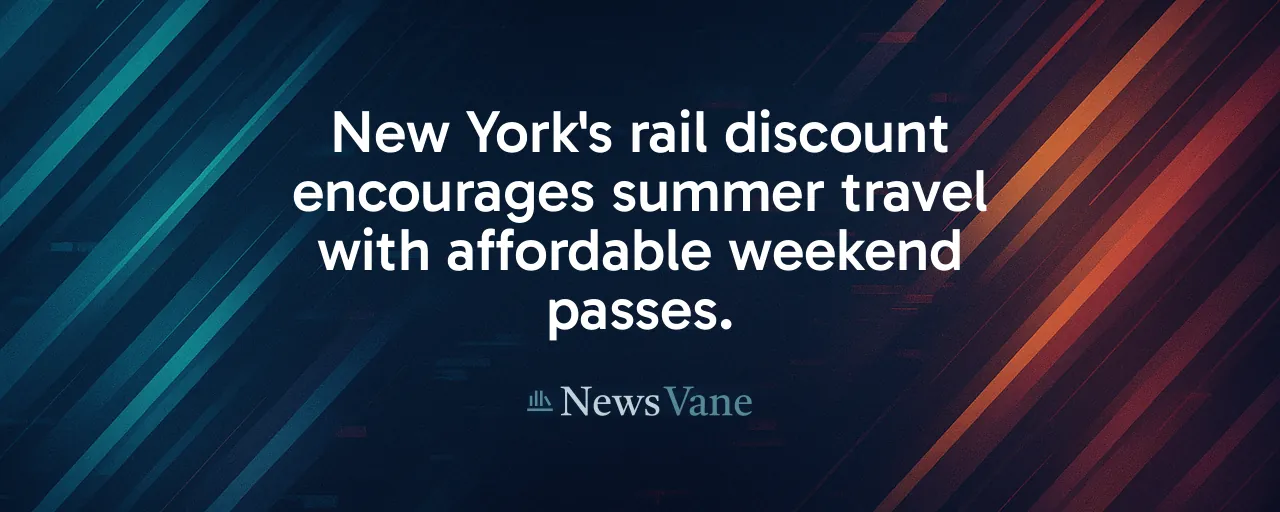A Ticket to Summer Savings
New Yorkers looking to escape the city heat this summer got a boost from a revived rail discount program. Announced on July 2, 2025, by Governor Kathy Hochul, the 'Summer Saturday' initiative allows Long Island Rail Road and Metro-North Railroad monthly pass holders to travel anywhere on their respective lines every Saturday from July 5 to August 30. Better yet, they can bring up to two friends or family members for just $1 each way, making group outings more affordable than ever.
The program aims to get people out of their cars and onto trains, opening access to Long Island beaches, Hudson Valley hikes, or Broadway shows without the hassle of traffic or high costs. With both railroads boasting near-record on-time performance, 95 percent for LIRR and 98 percent for Metro-North in 2024, the timing seems ripe to lure riders back to rail for leisure trips.
The initiative is part of a broader push to rethink how New Yorkers move, especially as congestion pricing rolls out in Manhattan, nudging drivers toward public transit. But the real question is whether this deal delivers lasting value for riders, businesses, and the state's transit system, or if it's a short-term perk with hidden costs.
Why Rail Discounts Matter
Affordable transit shapes how people live and spend. For families, a $1 fare to bring kids or friends along can turn a pricey day trip into a budget-friendly adventure. Data from similar programs, like Chicago's weekend passes, shows that low fares drive up ridership and pump money into local shops, restaurants, and attractions. In New York, businesses near rail stations, from Montauk to Poughkeepsie, stand to gain as more visitors arrive without needing parking.
The program also aligns with environmental goals. With weekend trains often running below 50 percent capacity, filling seats reduces the per-rider carbon footprint. Studies from transportation economists suggest that off-peak fare cuts, with elasticity around 0.3 to 0.4, can boost ridership without overloading systems. If even a fraction of car trips shift to rail, it could ease road congestion and support the state's climate targets.
Still, the benefits hinge on execution. Clear marketing, reliable service, and easy ticketing through the TrainTime app are critical to convince New Yorkers to ditch their keys for a train seat.
The Catch Behind the Deal
Not everyone gets equal access to the savings. The discount is tied to monthly passes, which cost hundreds of dollars and are typically held by full-time commuters with stable incomes. Lower-income New Yorkers or occasional riders may find themselves left out, unable to justify the upfront cost of a pass. Advocacy groups have pointed out that nearly one in five New Yorkers struggles with transit costs, and this program doesn't directly address their needs.
Funding is another sticking point. The MTA estimates the program could forgo millions in fare revenue, potentially covered by congestion pricing funds or the Outer Borough Transportation Account. While these sources aim to balance transit investments, critics argue that diverting money to leisure discounts could shortchange core weekday services or infrastructure repairs. Independent auditors stress the need for post-pilot metrics to track ridership, revenue, and whether the program truly shifts travel habits.
Crowding is a practical concern, too. Popular beach-bound trains could see packed cars, especially on Long Island routes. The MTA may need to add cars or adjust schedules to keep the experience smooth for all riders.
Lessons From the Past
New York's transit system has tested fare experiments before. The CityTicket program, launched in the early 2000s, offered discounted weekend subway-to-rail connections, proving that lower prices could draw new riders without tanking revenue. The 'Summer Saturday' deal itself ran in 2023 and 2024, and a 'Winter Weekend' version joined the mix in 2025. These pilots showed ridership spikes, particularly for leisure travel, as post-pandemic weekend demand outpaced weekday commutes.
London's off-peak travelcard offers a useful comparison. By slashing weekend fares, the city saw more families and tourists using trains, with local businesses reporting higher foot traffic. New York's program could follow suit, but only if it learns from past hiccups: ensuring conductors can verify $1 tickets quickly and that digital systems handle higher transaction volumes.
Balancing Access and Stability
To make the program work for more New Yorkers, some tweaks could help. Expanding discounts to occasional riders, perhaps through a weekly CityTicket option, would broaden access. A modest increase to the $1 guest fare, say, $2, could offset revenue losses while keeping trips affordable. Allowing limited cross-honoring between LIRR and Metro-North on select routes might also simplify regional travel, though capacity constraints would need careful study.
Long-term, the MTA needs a clear funding plan. Congestion pricing revenue offers a lifeline, but it's not a blank check. Pairing fare discounts with rigorous evaluation, tracking ridership, economic impact, and mode shift, will show whether the program deserves to become permanent or needs retooling.
A Step Toward Smarter Travel
The 'Summer Saturday' program is a bold move to make rail travel a go-to for summer fun. It promises more affordable outings, stronger local economies, and fewer cars on the road. But its success depends on reaching beyond monthly pass holders and ensuring the MTA's budget can sustain the hit.
For now, New Yorkers have a chance to explore their state on the cheap, from sandy shores to scenic trails. If the program delivers, it could pave the way for more inclusive, sustainable transit options. The tracks are laid; now it's about keeping the trains running on time and the benefits rolling for all.
As summer unfolds, the real test will be whether this deal sparks a lasting shift in how New Yorkers travel, or if it's just a fleeting discount on the ride.
